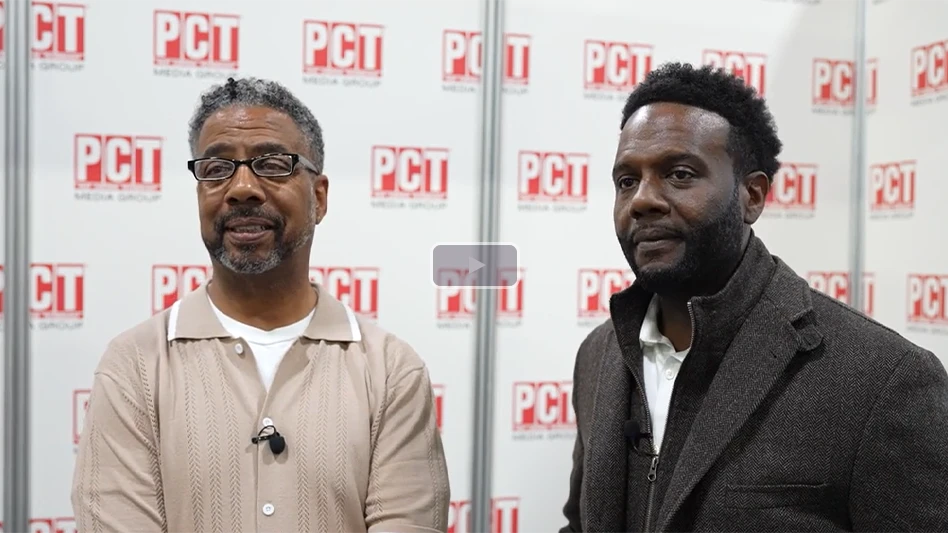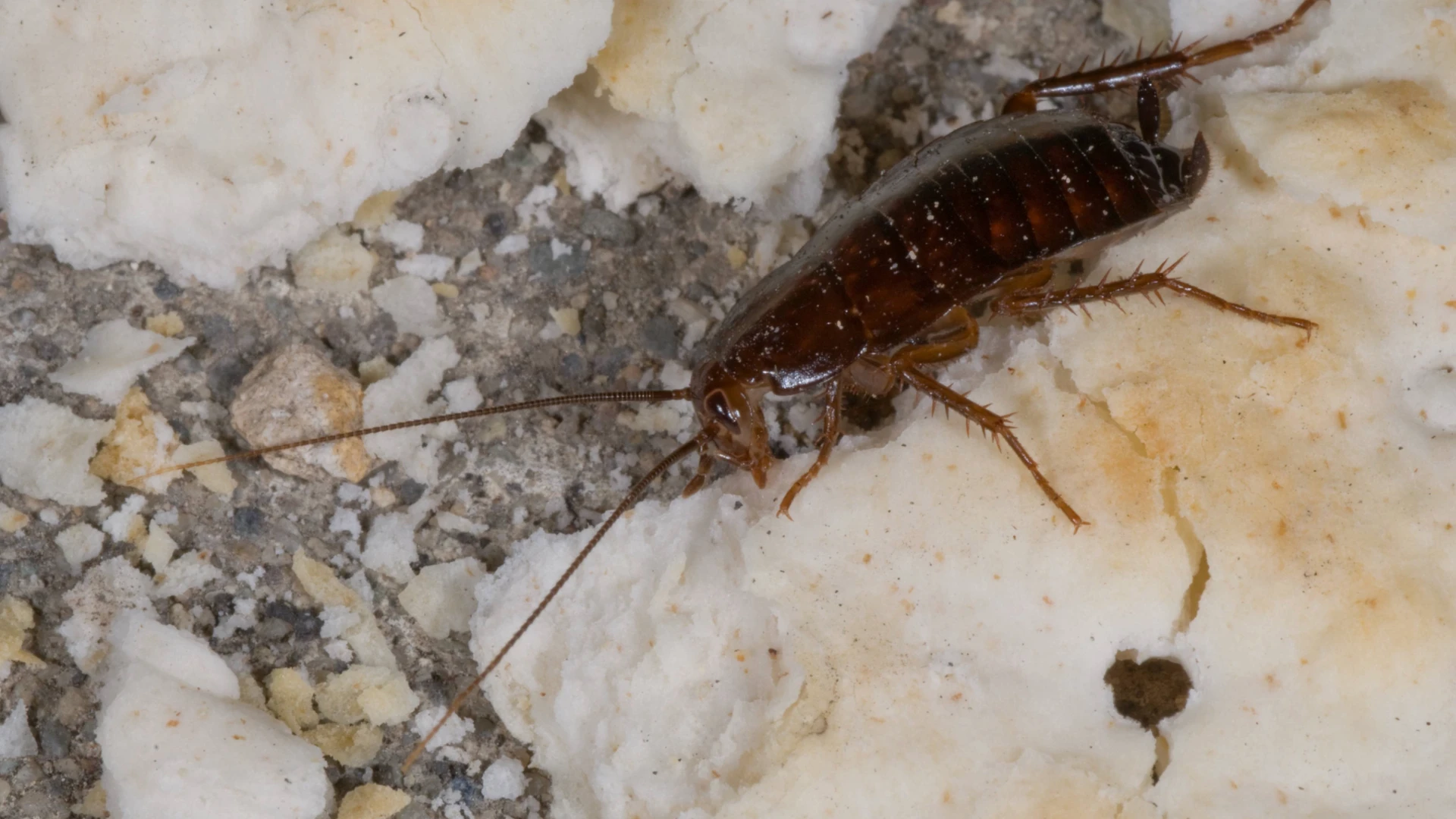Editor’s note: The following is a review of some of the latest news stories, products and information about the termite market. PCT covers the termite control market annually in its January, February and March issues. More termite market information will appear in the next two issues. Manufacturers, if you have termite information you’d like to appear in PCT magazine, send it to: Editor, PCT magazine, 4012 Bridge Ave., Cleveland, OH, 44113.
Claims and Retreats Decline For Termite Work, PCOs Report
In a PCTonline survey last year, respondents said results obtained with termite baiting systems are generally positive. Of those who use termite baits, 35 percent said termite-related claims have decreased, while 57 percent said claims remained the same since they began using baits. Eight percent said claims have increased.
Jeff Johnson, vice president of A-Active Termite & Pest Control in Virginia Beach, Va., says his company’s claims have decreased by 85 to 95 percent (for those customers who have upgraded termite baits) since the company started using baits in 1995. He attributes the decrease to the company’s "integrated termite management program," which also involves the use of termite detection canines. "We’re eliminating termite colonies, number one," said Johnson. "Number two, if there is a problem we’re able to quickly identify it through the use of the dogs and number three, we’re vigilant about our monitoring program." Johnson adds that the company is adamant about requiring homeowners to take care of their property, correcting such things as moisture problems, mulch over siding and wood-to-ground contact. "It’s more or less a partnership we form with the client," he says.
PCT’s online survey also indicated that retreats and damage claims are becoming less worrisome for the industry. The majority of respondents (61 percent) said their average annual retreat rate was 1 to 2 percent. Most (72 percent) said their average termite-related damage claim was between $100 and $500. And 82 percent said they have between 1 and 5 termite-related damage claims each year.
BASF Announces Wooden Laptop and PDA Winner
Officials of BASF Professional Pest Control recently announced Tammy Johnson as the winner of the company’s Wooden Laptop Sweepstakes. She is the wife of Ray Johnson, owner of Johnson Pest Control in Sevierville, Tenn. Johnson received the sweepstakes prize — a wooden laptop and PDA.
The sweepstakes was held at the NPMA PestWorld 2003 conference in Dallas, Texas, and helped raise awareness of the tools available to pest management professionals through BASF’s home on the Web, www.PestControlFacts.com. Johnson was randomly chosen from the hundreds of pest management professionals who entered the sweepstakes at the BASF booth.
"We’ve continued our efforts to offer tools on PestControlFacts.com that benefit pest management professionals — from updated product training, to Termidor and Phantom literature, to resources for our BASF partners," says Karl J. Kisner, senior marketing manager at BASF. "We thank the many pest management professionals who participated in our Wooden Laptop Sweepstakes, as well as the thousands of professionals who have taken advantage of our online resources."
BASF Professional Pest Control markets a range of professional pest control solutions, including Termidor and Phantom termiticide-insecticides, Bifenthrin Pro Multi-Insecticide, Permethrin Pro Termite-Turf-Ornamental and Amdro Pro Fire Ant Bait.
Bayer ES’ Premise Helps Control Drywood Termites
Drywood termites, which live above ground and need no contact with soil for survival, are found primarily in Florida, in several states along the Gulf Coast and in California. Dry-wood termite pop-ulations have been expanding in recent years.
Drywood termite control has typically relied on fumigant applications as the primary strategy but, according to Bayer Environmental Science, more pest management professionals increasingly are turning to so-called "spot" treatments with non-repellent termiticides, like Premise Termite Elimination, as an alternative to the fumigation process. Registered for drywood termites in 1999, Premise is used by many pest management professionals because of its broad use label, according to the company.
Curative applications that are approved on the Premise label include traditional "drill and treat" directions for treatment of individual galleries, as well as foam or mist applications into galleries, voids, or attic/subfloor areas. Approved preventive applications include direct spraying of exposed wood surfaces, even in commonly occupied areas of the structure, plus the use of foam or mist applications to wood surfaces in voids, attics or subfloor areas.
Ron Stewart of Bug Away Pest Control in St. Augustine, Fla., is one pest management professional who has been actively involved with this new technology. Stewart used Premise on the historic Flagler College in St. Augustine to treat a massive drywood infestation. Although fumigation was first prescribed, Bug Away recommended using Premise because of its high efficacy rates, low cost and minimal hassle, Bayer ES reports. "I am thoroughly impressed; this treatment methodology is revolutionary. This is a great alternative to fumigation and the hassles associated with that type of treatment," Stewart said.
Ensystex Offers Automated Inspection Scheduling, Data Exchange
Exteris stands for "Exterra Information System." Exteris is a stable, fully developed computer program that streamlines the baiting data collection and reporting process. The core of Exteris from Ensystex is its scheduling functionality. When PCOs first install Exteris, they are asked a series of questions about how often they want to inspect stations under every possible condition. Exteris then uses this information to automatically keep the baiting program in compliance with the Labyrinth label.
The ExScanner is an off-the-shelf hand-held field data collection device built on the Handspring platform using the Palm OS and a snap in barcode reader module. This means that the ExScanner can do lots of things other than just manage baiting sites, Ensystex reports. And its low cost means you can afford to put them in the hands of more technicians, the company says.
With some baiting information system field data devices, PCOs are required to manually select and transfer from the host computer to the device sites due for inspection on a particular day. In contrast, every time the ExScanner is synched to the host computer, up to date and complete information for all sites is automatically transferred to the ExScanner, thereby eliminating the need to manually select sites.
LIPCA Web Site Offers New Features
LIPCA Insurance Group, one of the leading insurers of pest control companies in the United States, recently added new features to its Web site — www.lipca.com. The company has updated its regulatory database to include new topics obtained from questionnaires submitted by regulators and members of the Association of Structural Pest Control Regulatory Officials (ASPCRO). The database features a utility to allow searches and comparisons of selected topics and states.
Also added was a streaming video of live Formosan termites. The film clip was captured by a camera probe inserted into a hole drilled in an infested live Oak tree in New Orleans by technicians with the New Orleans Mosquito and Termite Control Board. As the probe descends into the tree, live Formosan termites can be seen scurrying across the camera lens and around the perimeter of the drilled cavity.
The map of counties and parishes in states with identified Formosan termite infestations was also updated to reflect the current spread of this voracious insect. (Visit www.lipca.com/formosan.htm for additional information.) All of the new features and updates can be accessed by pest management professionals on the navigation bar on the left side of the site’s homepage.
Whitmire Micro-Gen Enters Termite Bait Market
Whitmire Micro-Gen has entered the termite baiting category with the introduction of the Advance Termite Bait System. This termite colony elimination system provides pest management professionals with an exclusive combination of termite killing power, technician serviceability and enhanced profitability for their businesses, the company says.
The Advance Termite Bait System, available this month through distribution, offers increased profitability for pest management professionals due to lower labor costs, lower material costs and increased cash flow from a buy-as-you-go business model.
Whitmire Micro-Gen used a product development process that involved industry researchers such as Dr. Roger Gold, Texas A&M University and Dr. Brian Forschler, University of Georgia. They took the best features of current bait systems, added innovation, and created the Advance Termite Bait System.
The Advance termite bait station provides maximum wood-to-soil contact due to its termite monitoring base, designed with easy-access wood slots to invite termites into the station. The slots allow the soil to penetrate the interior and create the ultimate termite friendly environment. Termites then explore upward into the termite inspection cartridge, where they feed until the cartridge is replaced with the termite bait cartridge, providing ultra low disturbance functionality. The 93-gram termite bait cartridge provides nearly three times the bait load of the leading bait system in a unique compressed cellulose matrix called Puri-Cell — highly preferred in studies to pine wood and other cellulose matrices, Whitmire says. This compressed Puri-Cell matrix contains 0.25% diflubenzuron, a chitin synthesis inhibitor.
Look for additional information about this new product in next month’s issue of PCT magazine.
Dow AgroSciences Launches Ford Mustand Sweepstakes At NPMA Show
Dow AgroSciences LLC announced at PestWorld 2003 the official launch of the Sentricon Termite Colony Elimination System Sweepstakes, a contest offering an opportunity to win a Ford Mustang GT. The Mustang was on display at Dow AgroSciences’ booth throughout PestWorld. According to Mark Neterer, national commercial manager for Dow AgroSciences, the Sweepstakes grand prize – a Ford Mustang – represents characteristics of the Sentricon System with new Recruit III termite bait. “Both Recruit III and the Mustang offer instant acceleration, greater power, broken speed records and thrilled Authorized Operators,” says Neterer. “The Sweepstakes is an attention-grabbing way to continue the excitement that has been generated by the introduction of Recruit III and extend the ‘buzz’ now that people are seeing the positive results out in the marketplace.” Another innovation to the Sentricon System, Recruit III provides even faster colony elimination, resulting in fewer monitoring visits and increased customer satisfaction, Dow AgroSciences says. “The frenzy for Recruit III has become contagious,” adds Neterer. “Faster elimination means Authorized Operators are instantly accelerating their business.” The Sweepstakes contest will run through this spring, climaxing when the winner is announced and awarded the Mustang at the Indianapolis Brickyard 400 on Aug. 8. Two runners-up will be awarded two roundtrip airline tickets, hotel accommodations and tickets to the Indianapolis Brickyard 400. See complete contest rules for details. Contest rules are available from Dow AgroSciences.
Syngenta Hosts Impasse Press Conference In NYC
Syngenta presented its two termite products — Impasse Termite System and Impasse Termite Blocker — at a press conference in New York City this fall. The Impasse System is a termite-proof, polymer sheet that is installed before the concrete foundation of a new home is poured and provides wall-to-wall protection; Impasse Blocker is made of the same material but is designed to be attached around utility pipes, a highly vulnerable source of termite infestation.
The Impasse products offer a new approach that provides much longer-lasting control than conventional termite treatments, according to Syngenta. The products combine a barrier method of protection that is “locked in” between polymer layers and results in a safer and more environmentally effective method of protection, Syngenta says.
“Termites are eating us out of house and home. They cause about $2.5 billion worth of destruction to U.S. homes annually,” said Bill Lewis, vice president of Professional Products business. “Since homeowners insurance does not cover termite damage, our technology provides peace of mind and a long-lasting solution for homeowners.”
University of Florida Entomologist, Dr. Faith Oi, spoke about termite lairs and the destruction they reap. “Termites live in highly organized colonies and forage in groups of hundreds of thousands,” she said. “Living underground it is difficult to tell where they could emerge next — quite possibly underneath your home.”
The card below, which features a recipe for termite biryani, was sent to the press as an invitation. Renowned insect chef David George Gordon was on hand at the event to cook up cocktails, canapes, entrees and even sweets for attendees.

Explore the January 2004 Issue
Check out more from this issue and find your next story to read.
Latest from Pest Control Technology
- Webinar: Maximizing Cash Flow — Key Strategies for Business Growth
- WorkWave Announces Wavelytics
- Rising Rat Populations Linked to Warming Temperatures, Urban Growth, Study Finds
- How Might the 2024 Elections Impact PCOs
- Keeping Track of Termite Identification
- Mosquito Joe Earns EPA's PESP Gold Level Designation
- Texas PestVets Coat Drive Collects Over 850 Items for Soldiers’ Angels
- Conquer Ants Fast!





